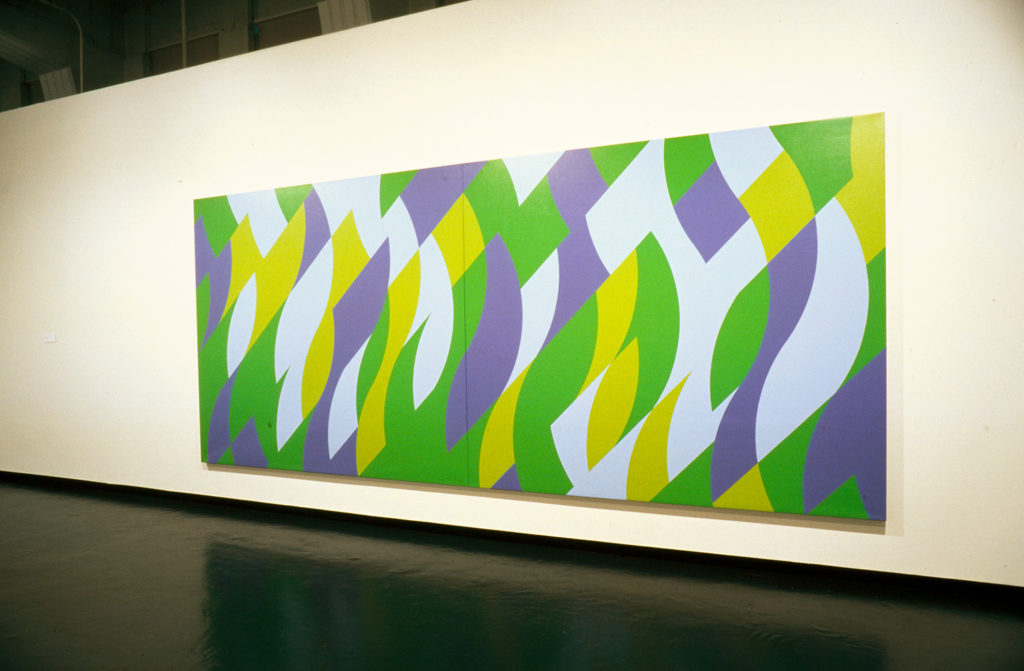OTHER VENUES Museum of Contemporary Art, Sydney PUBLICATION publisher Ridinghouse, London, Museum of Contemporary Art Sydney, and City Gallery Wellington; essays Paul Moorhouse, Jenny Harper, Lynne Cooke
British painter Bridget Riley is synonymous with op art—the 1960s art movement. Exploring the relationship between what we see and how we see, her paintings play games with our eyes and brains. Robert Melville said, 'No painter, dead or alive, has ever made us more aware of our eyes than Bridget Riley.'
In the late 1950s, Riley was dissatisfied with conventional approaches to representing nature in art. Hoping to capture the sensations of nature, she developed a simple abstract vocabulary to evoke qualities of light, movement, and space. In the 1960s, her hypnotising canvases influenced graphic design and fashion. In 1968, she is the first contemporary British painter and the first woman to win the international prize for painting at the Venice Biennale.
The British Council developed the touring show Bridget Riley: Paintings and Preparatory Work 1961–2004 out of Riley's 2003 Tate Britain retrospective. It’s the first major show of her work in New Zealand, with thirty-five large paintings and some seventy works on paper, tracking her development over four decades. Paintings are presented in 'families' and the drawings hung together salon style.
The show follows the development Riley's work. The earliest works are black-and-white geometric-pattern paintings from the 1960s (like Movement in Squares, 1961). By 1967, she starts experimenting with colour, combining narrow colour stripes that optically fuse (Late Morning, 1967–8). Between 1973 and 1980, she addresses undulating lines (Song of Orpheus 3, 1978). In the 1980s, she starts to paint in a more intuitive, quasi-musical way, allowing for repetition and variation (Silvered, 1981). In 1986, she introduces lozenge shapes that suggest reflection and refraction (Reflection 2, 1994). In 1997, she adds curves to create segmented partitions (Lagoon 1, 1997).
Riley’s preparatory works demonstrate her meticulous approach. While some may assume her process is dry and calculated, her work is fuelled by experimentation, imagination, and intuition.































































































































